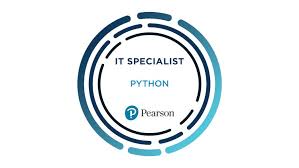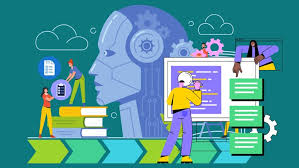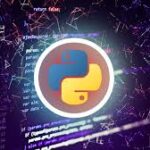Formerly Microsoft MTA 98-381: Prepare for your Certification Exam Information Technology Specialist ITS-303 Python 2024
SUMMARY
The ITS-303 Python (Information Technology Specialist) exam, formerly known as the Microsoft MTA 98-381, is designed for individuals looking to demonstrate their Python programming proficiency. This course provides comprehensive preparation with six practice tests, covering all essential knowledge areas needed to pass the exam. Each practice question is paired with an explanation and a “Try-It-Yourself-Code” feature, allowing you to practice coding directly in Python to better understand each concept.
- Operations using Data Types and Operators
- Data Types: Learn to evaluate expressions and identify data types in Python, including
str,int,float, andbool. - Data Type Operations: Understand data type conversions, indexing, slicing, and constructing data structures like lists. Learn about various list operations and operator precedence.
- Operators: Focus on using assignment, comparison, logical, arithmetic, identity (
is), and containment (in) operators to achieve the intended results in your code.
- Data Types: Learn to evaluate expressions and identify data types in Python, including
- Flow Control with Decisions and Loops
- Branching Statements: Construct and analyze code using
if,elif, andelsestatements, including nested and compound conditional expressions. - Iteration: Learn how to construct loops using
whileandfor, including the use ofbreak,continue, andpassstatements. Explore nested loops and compound conditional expressions within loops.
- Branching Statements: Construct and analyze code using
- Input and Output Operations
- File I/O: Gain skills in handling file operations like opening, closing, reading, writing, appending, checking file existence, and deleting files.
- Console I/O: Learn to handle console input/output operations, print formatted text using methods like
string.format()and f-strings, and manage command-line arguments.
- Code Documentation and Structure
- Learn best practices for documenting your Python code with proper indentation, white space, comments, and documentation strings. Understand how to generate documentation using tools like
pydoc. - Master defining functions, understanding function signatures, default values, and return statements.
- Learn best practices for documenting your Python code with proper indentation, white space, comments, and documentation strings. Understand how to generate documentation using tools like
- Troubleshooting and Error Handling
- Error Analysis: Detect and fix syntax, logic, and runtime errors.
- Exception Handling: Learn to handle exceptions using
try,except,else,finally, andraise. Practice unit testing with Python’sunittestmodule and various assertion methods (e.g.,assertEqual,assertIsInstance).
- Operations using Modules and Tools
- File System and CLI Operations: Use built-in modules like
os,sys, andioto perform basic file system tasks and handle command-line arguments. - Complex Computing Problems: Solve problems using Python’s built-in modules like
math(for functions likesqrt,pi,ceil,floor) anddatetime(for handling dates and times), as well asrandom(for generating random numbers and shuffling).
- File System and CLI Operations: Use built-in modules like
Why Learn Python?
Python is widely recognized for its simplicity, readability, and versatility, making it a popular choice for a variety of applications, including:
- Automation: Python can automate repetitive tasks such as web scraping, testing, and managing files, making workflows more efficient.
- Web Development: With frameworks like Django, Flask, and Pyramid, Python allows for rapid development of web applications, handling tasks like database interactions and building RESTful APIs.
- Artificial Intelligence: Python is a preferred language for AI development due to its rich libraries (e.g., TensorFlow, Keras) and ability to process large datasets, enabling the creation of intelligent systems capable of mimicking human actions and understanding natural language.
- Data Science: Python has become a leading language in data science, helping data scientists to analyze, visualize, and process vast amounts of data with libraries like Pandas, NumPy, and Matplotlib.
Course Benefits
The course offers a hands-on, practical approach to learning Python. With interactive coding exercises, you’ll not only prepare for the ITS-303 exam but also gain real-world skills that you can apply immediately in your career. The “Try-It-Yourself-Code” feature ensures you fully grasp concepts and can apply them in real coding environments.
Whether you are looking to pursue a career in software development, data science, web development, or automation, this course is an excellent resource to solidify your Python knowledge and get certified.
Description
Now is the time to get certified for Python!
ITS-303 Python (Information Technology Specialist)
Formerly Microsoft MTA 98-381
There are six Practice Tests with preparation questions from all knowledge areas
to prepare for the ITS-303 Python (Information Technology Specialist) exam at Certiport (Pearson VUE).
Every question has an explanation and a Try-It-Yourself-Code
which you can run to better understand the topic.
You can download the Try-It-Yourself-Code for all questions.
Operations using Data Types and Operators
- Evaluate expressions to identify the data type Python assigns to variables:
str, int, float, and bool - Perform and analyse data and data type operations:
Data type conversion, indexing, slicing, construct data structures, lists, list operations - Determine the sequence of execution based on operator precedence:
Assignment, comparison, logical, arithmetic, identity (is), containment (in) - Select operators to achieve the intended result:
Assignment, comparison, logical, arithmetic, identity (is), containment (in)
Flow Control with Decisions and Loops
- Construct and analyze code segments that use branching statements:
if, elif, else, nested and compound conditional expressions - Construct and analyze code segments that perform iteration:
while, for, break, continue, pass, nested loops, loops that include compound conditional expressions
Input and Output Operations
- Construct and analyze code segments that perform file input and output operations:
open, close, read, write, append, check existence, delete, with statement - Construct and analyze code segments that perform console input and output operations:
Read input from console, print formatted text (string.format() method, f-String method), use command-line arguments
Code Documentation and Structure
- Document code segments:
Use indentation, white space, comments, and documentation strings; generate documentation by using pydoc - Construct and analyze code segments that include function definitions:
Call signatures, default values, return, def, pass
Troubleshooting and Error Handling
- Analyze, detect, and fix code segments that have errors:
Syntax errors, logic errors, runtime errors - Analyze and construct code segments that handle exceptions:
try, except, else, finally, raise - Perform unit testing
Unittest, functions, methods, and assert methods (assertIsInstance, assertEqual, assertTrue, assertIs, assertIn)
Operations using Modules and Tools
- Perform basic file system and command-line operations by using built-in modules:
io, os, os.path, sys (importing modules, opening, reading and writing files, command-line arguments) - Solve complex computing problems by using built-in modules:
Math (fabs, ceil, floor, trunc, fmod, frexp, nan, isnan, sqrt, isqrt, pow, pi) datetime (now, strftime, weekday), random (randrange, randint, random, shuffle, choice, sample)
Why learn Python?
Python is easy to learn. The syntax is simple and the code is very readable. With Python, you can write programs in fewer lines of code than with most other programming languages. The popularity of Python is growing rapidly. It is now one of the most popular programming languages. Python has a wide variety of applications. It is used for automation, web application development, artificial intelligence, data science and so on:
Automation
Python can make life easier by automating many tasks, such as scraping a website to collect data, automating test cases in software development, or automating everyday office tasks. Python can easily access and read all kinds of files, which opens up the possibility of saving a lot of time by automating repetitive tasks.
Web Development
Python is a good choice for rapid web application development. With many frameworks like Django, Pyramid, and Flask, you can develop web applications with great speed using Python. Python is used on the server side of web development. You can use Python to interact with database and create RESTful API services.
Artificial Intelligence
The near future will be the era of artificial intelligence. In the past, computers and machines were used to perform mathematical calculations at very high speeds, but now many large organizations and researchers are working to develop intelligent systems that can perform tasks like a human. To some extent, machines are able to understand human emotions and their natural language. They can mimic certain human actions that were not possible before. Again, Python is very popular for developing AI systems.










